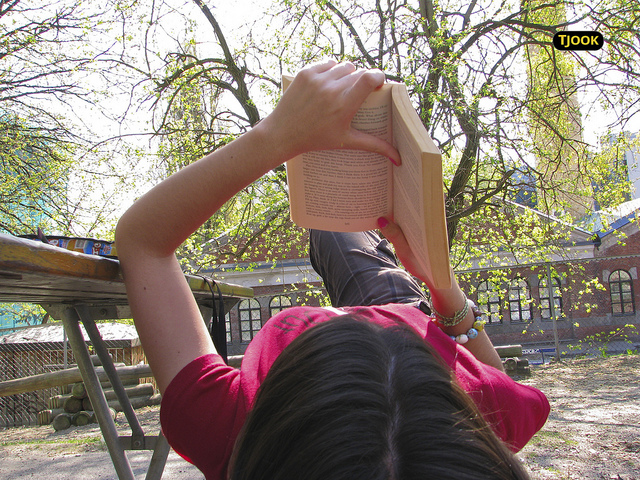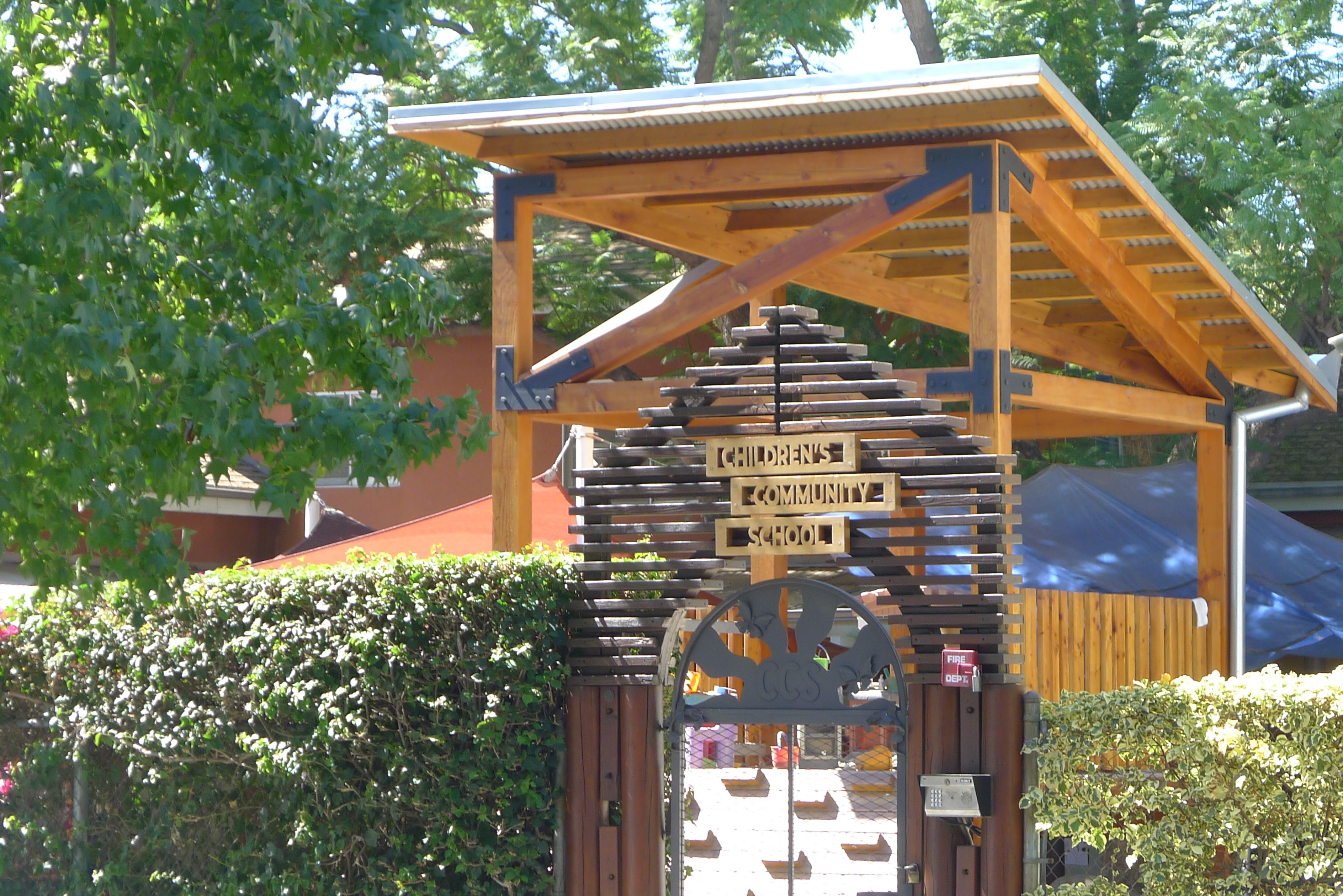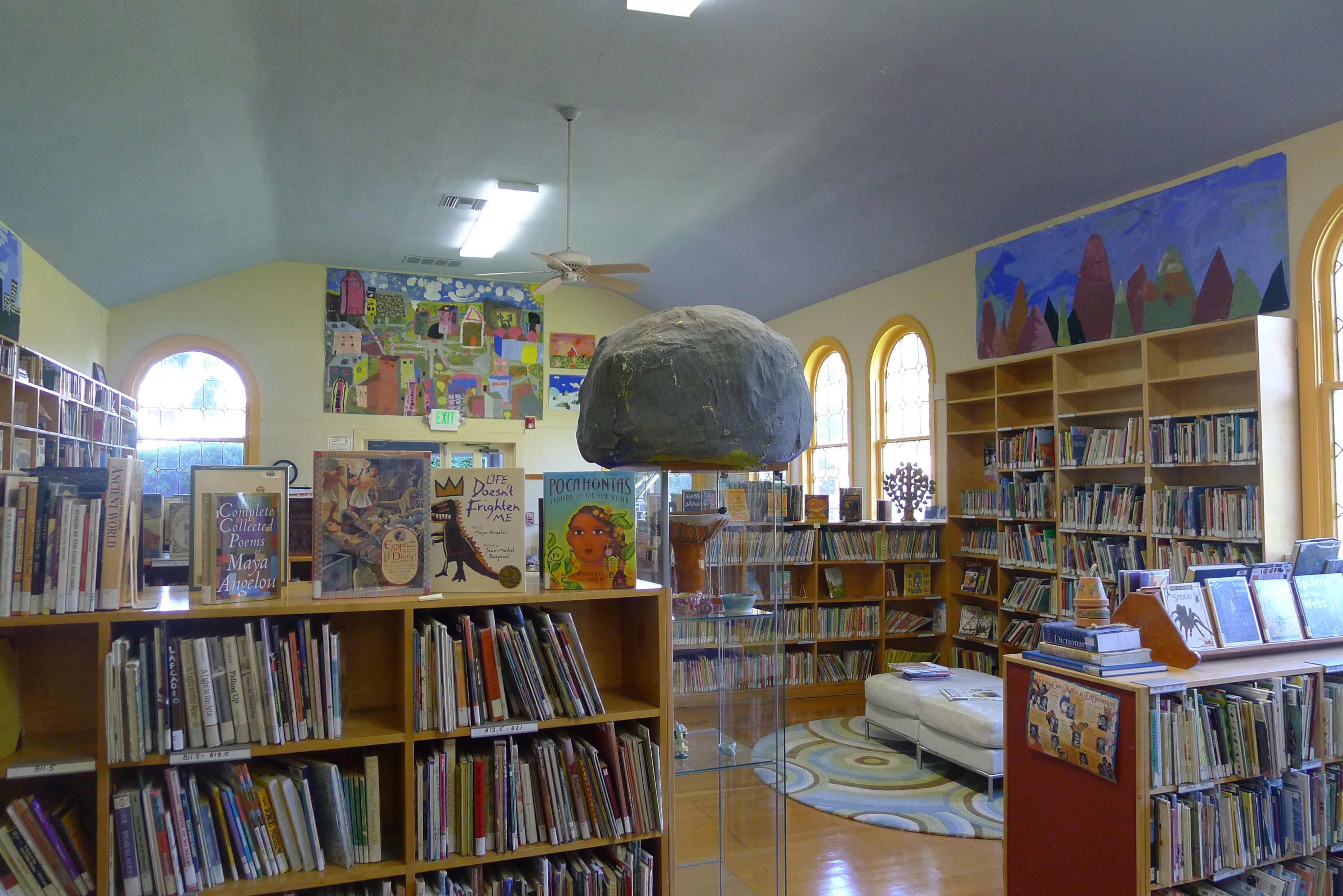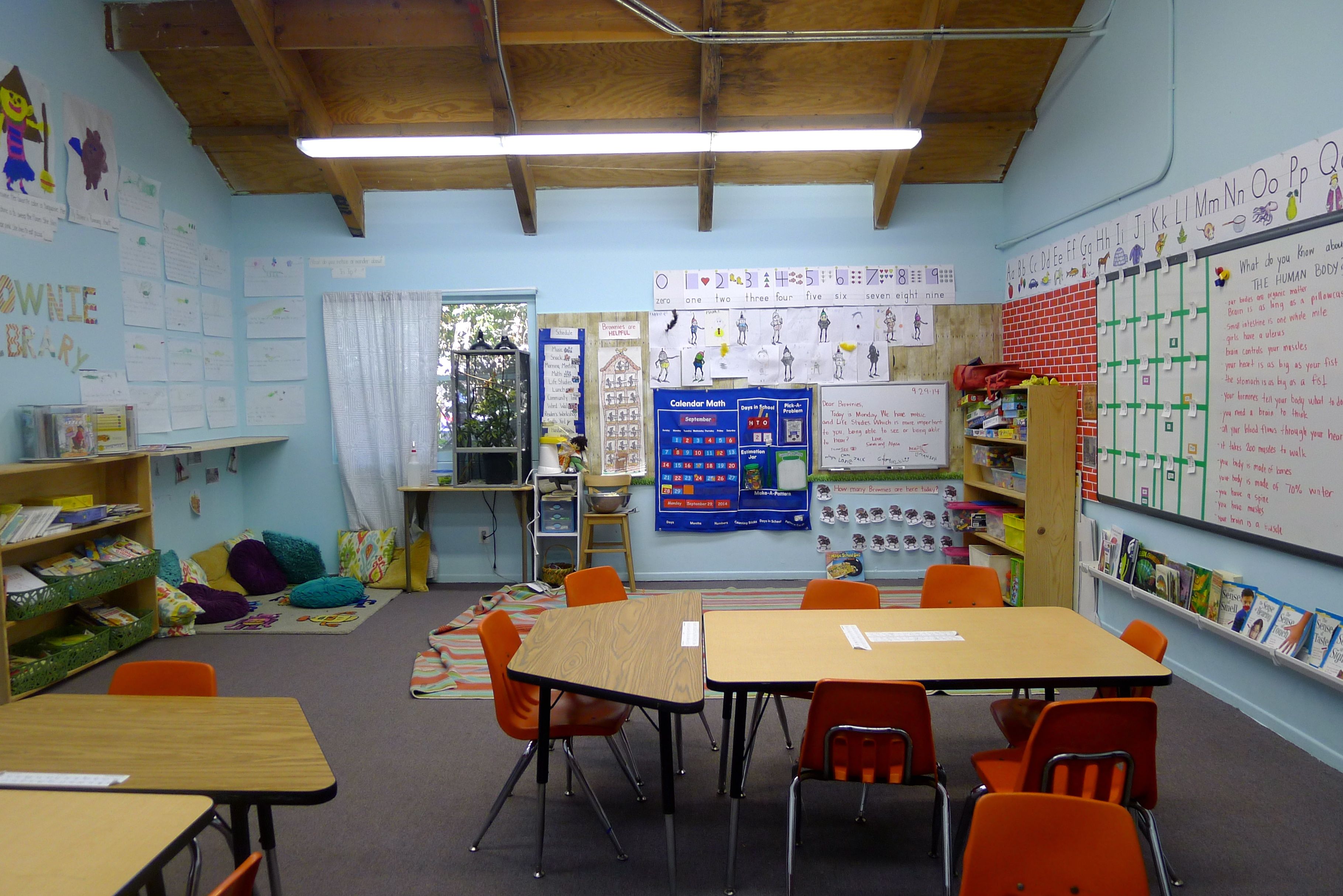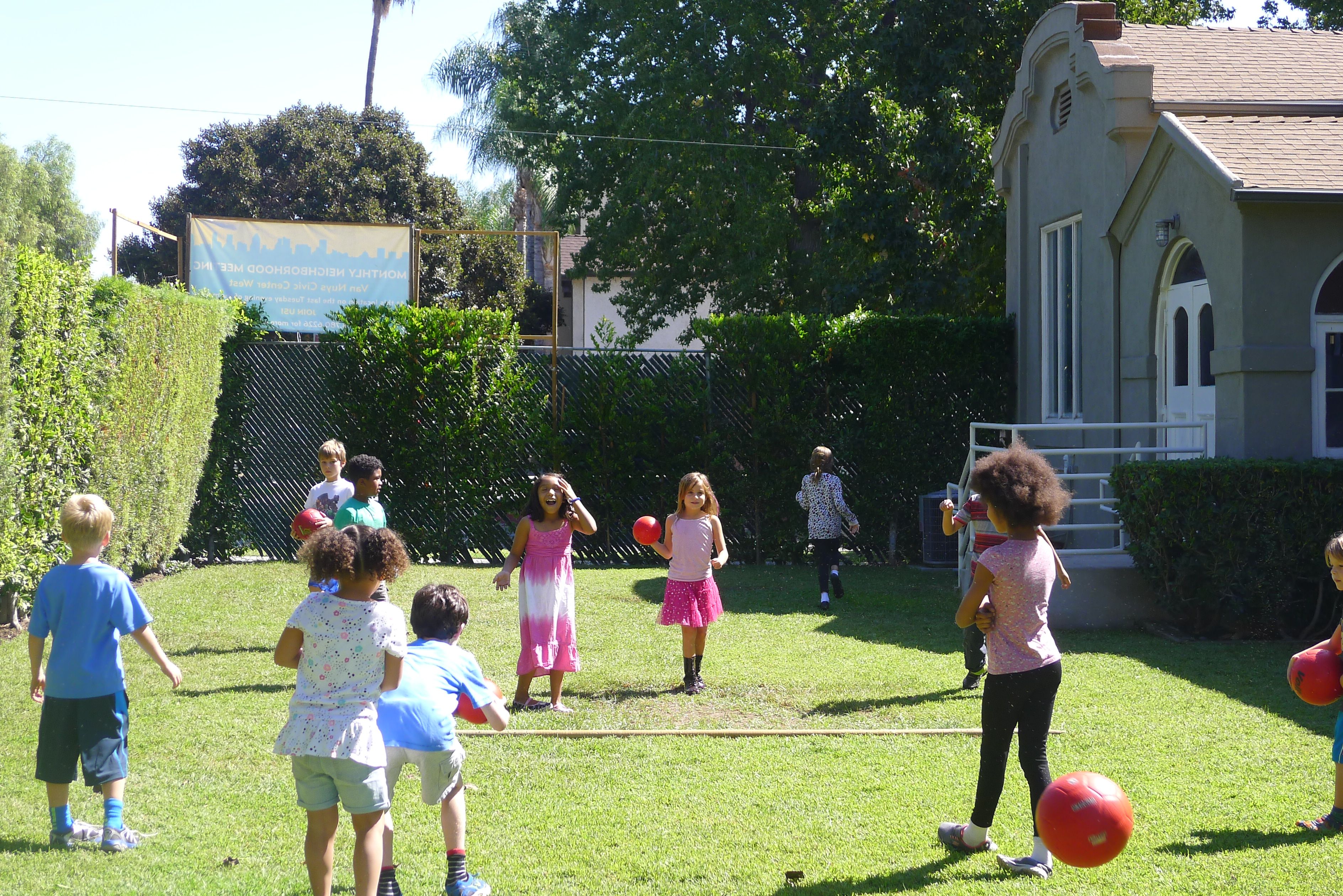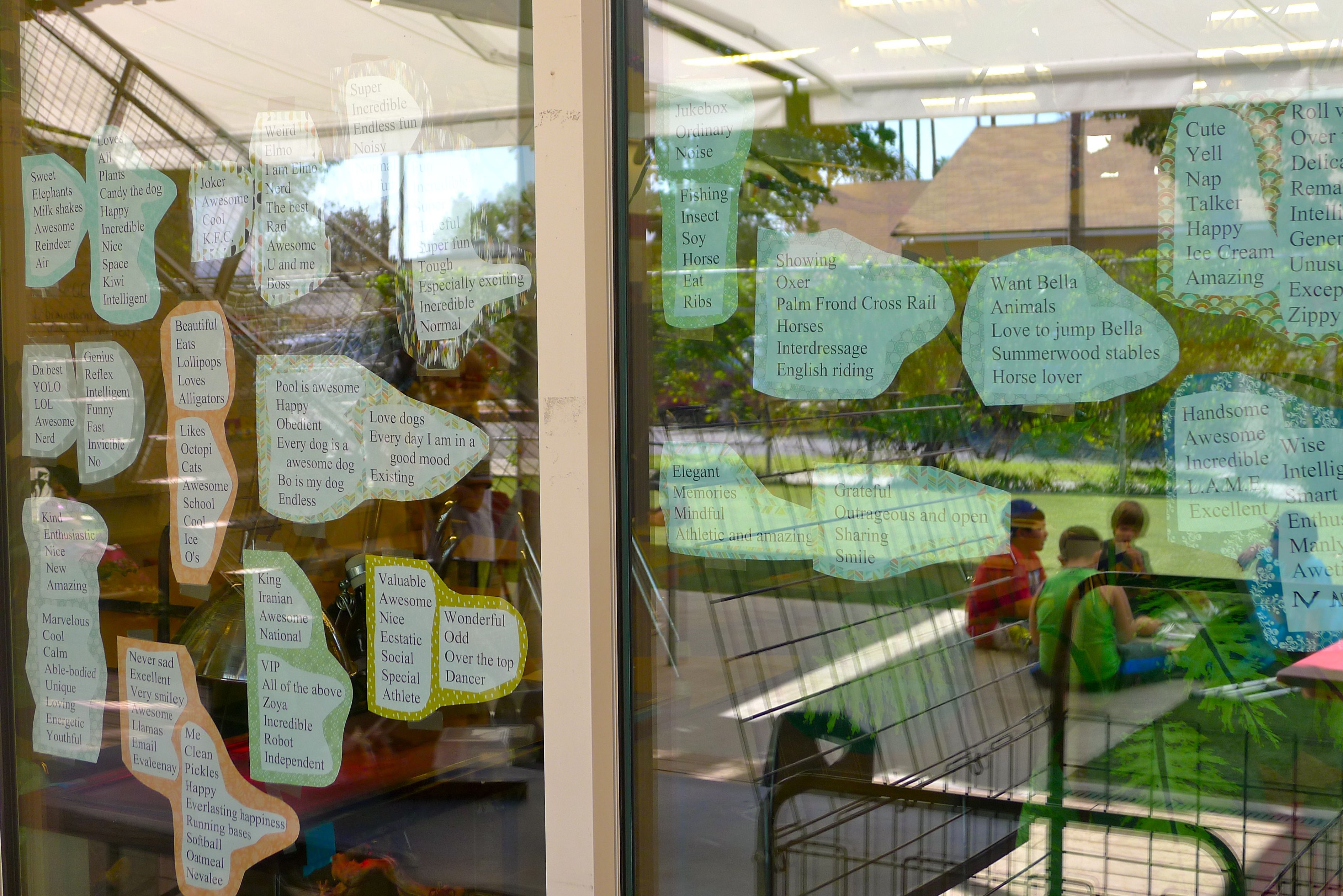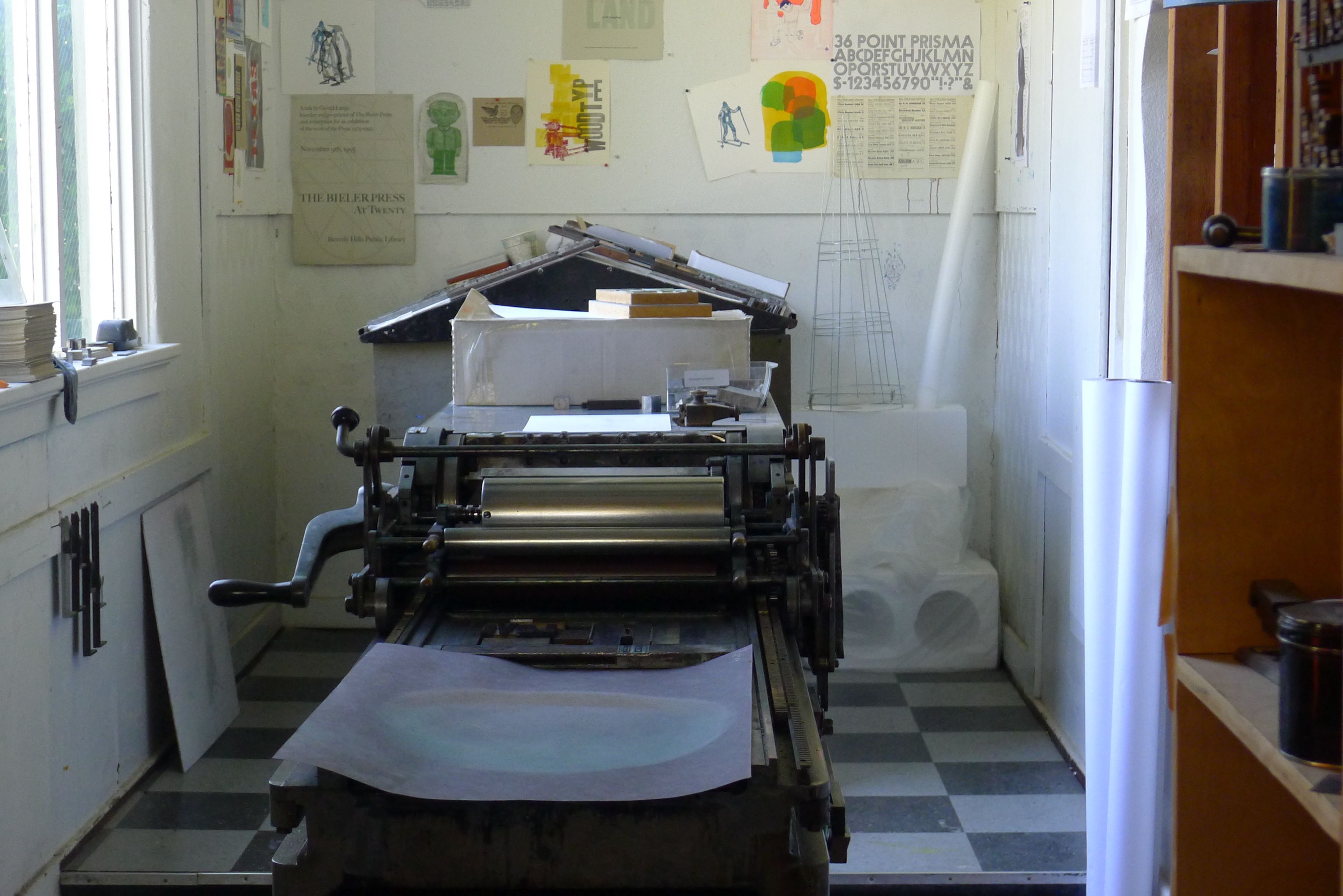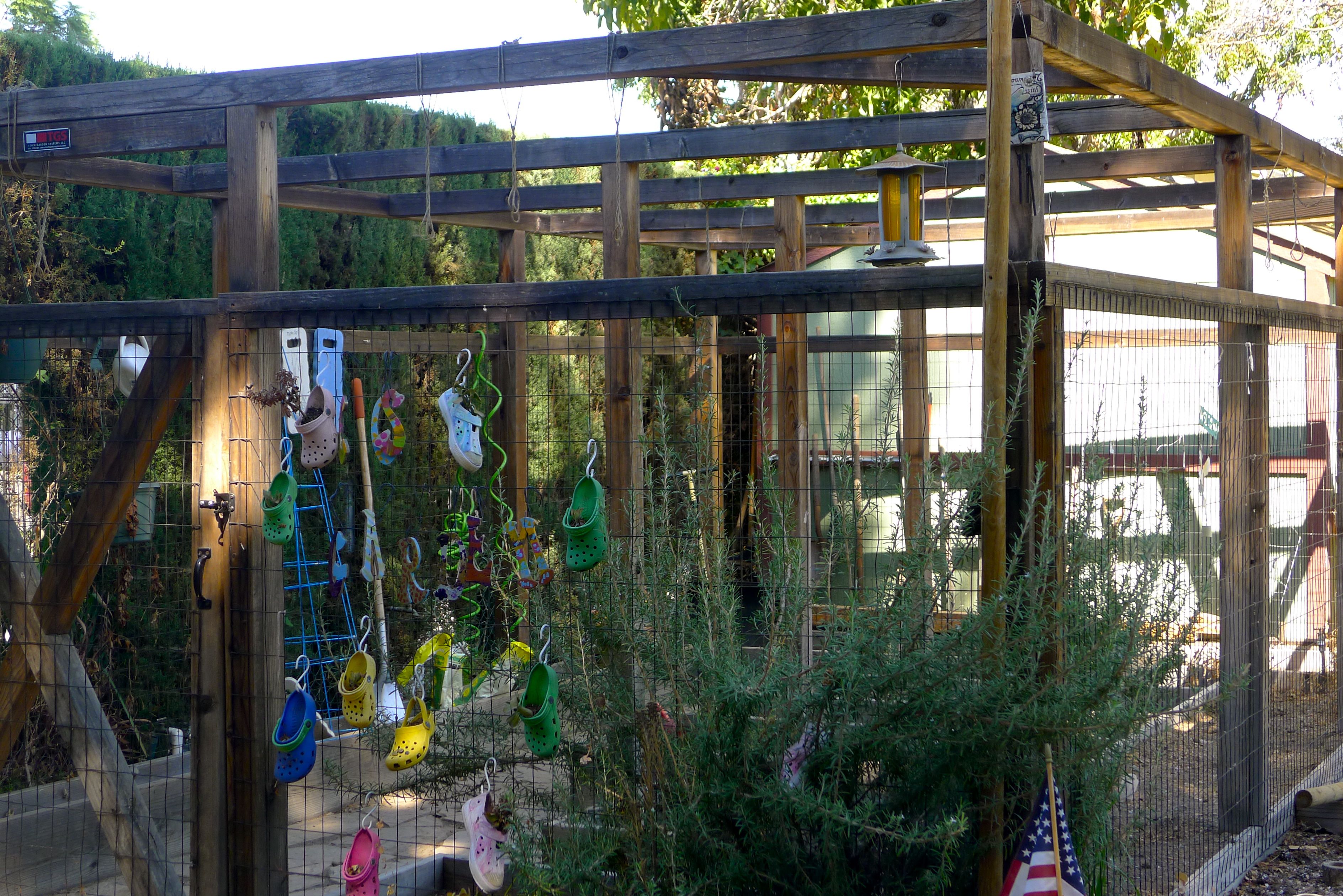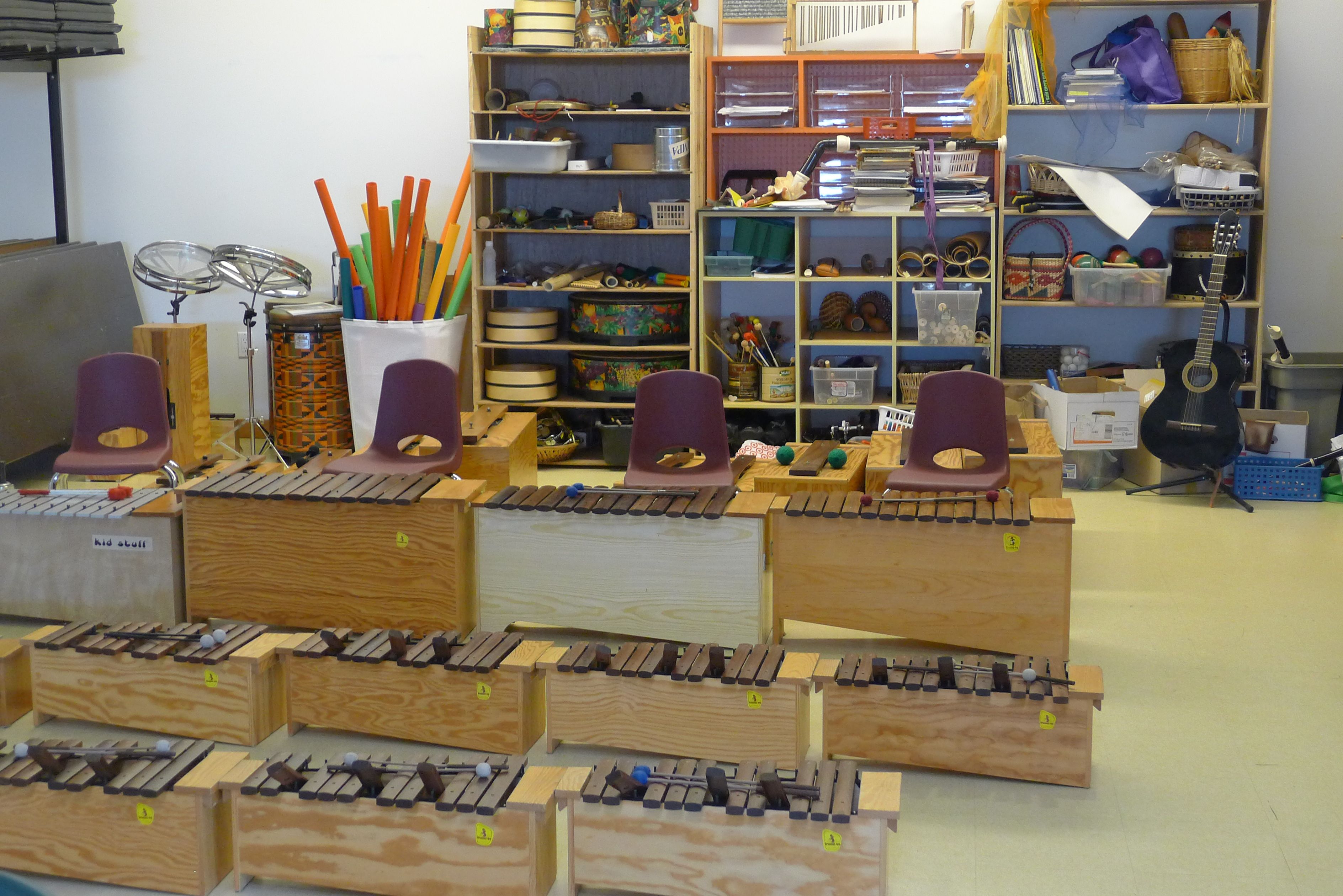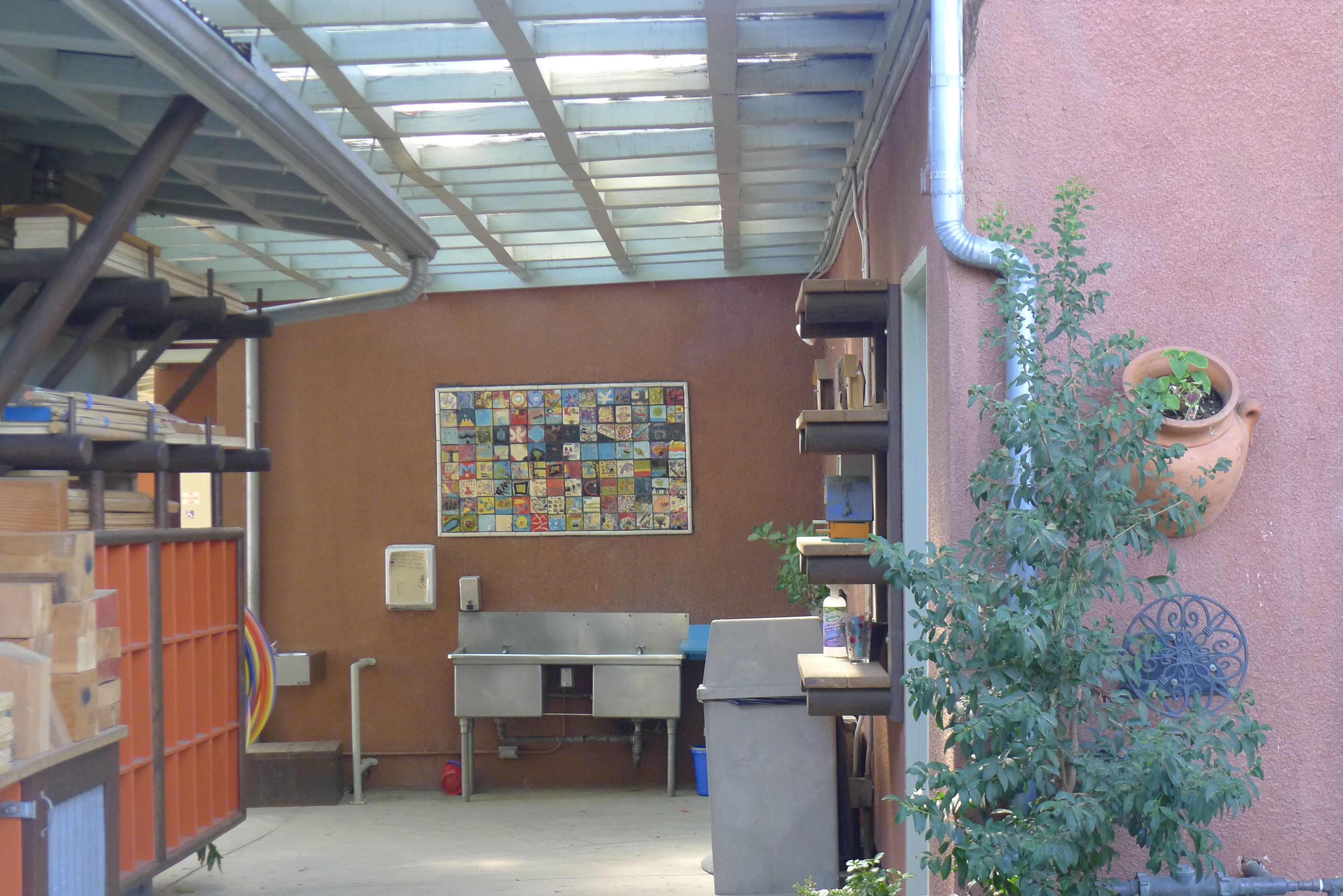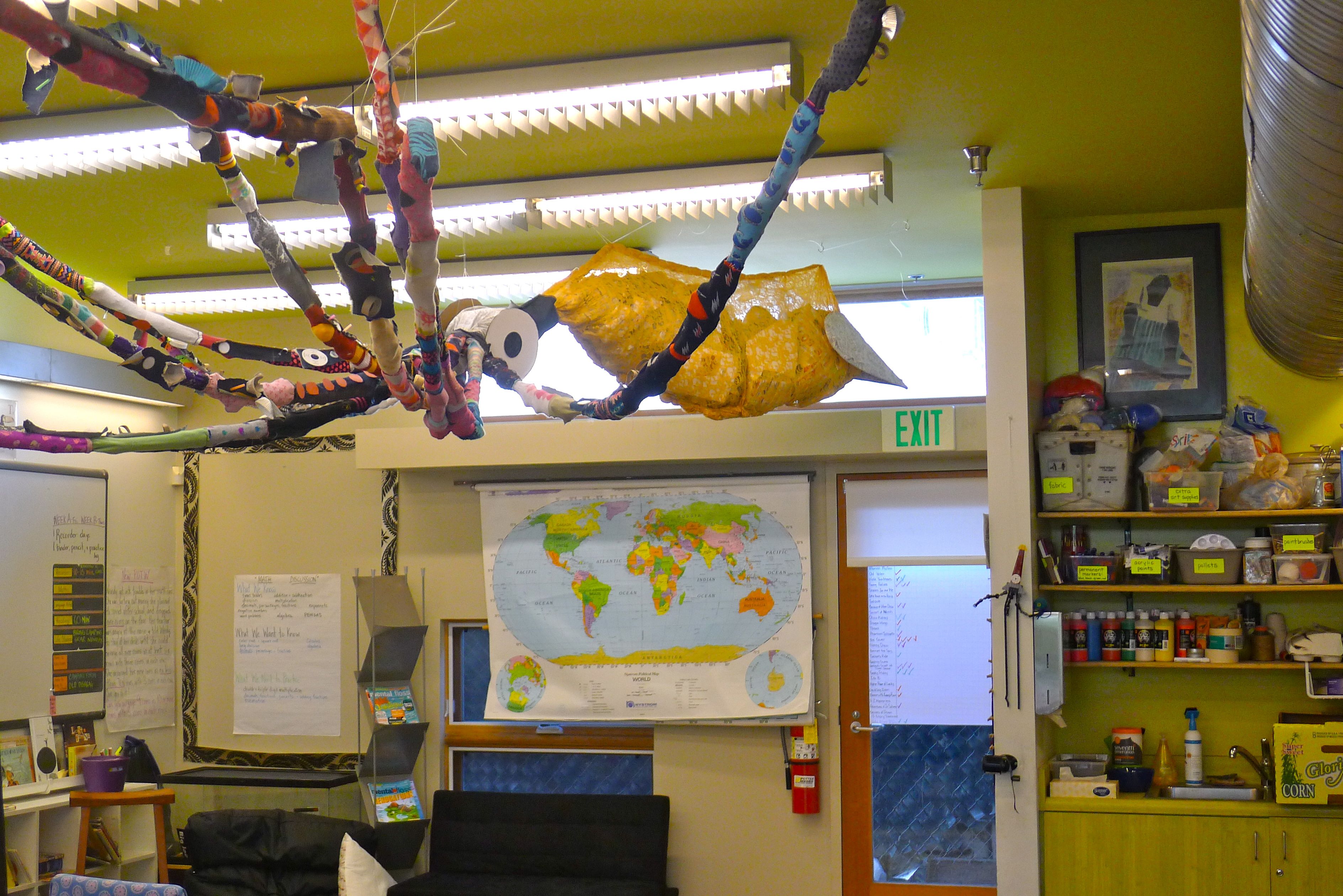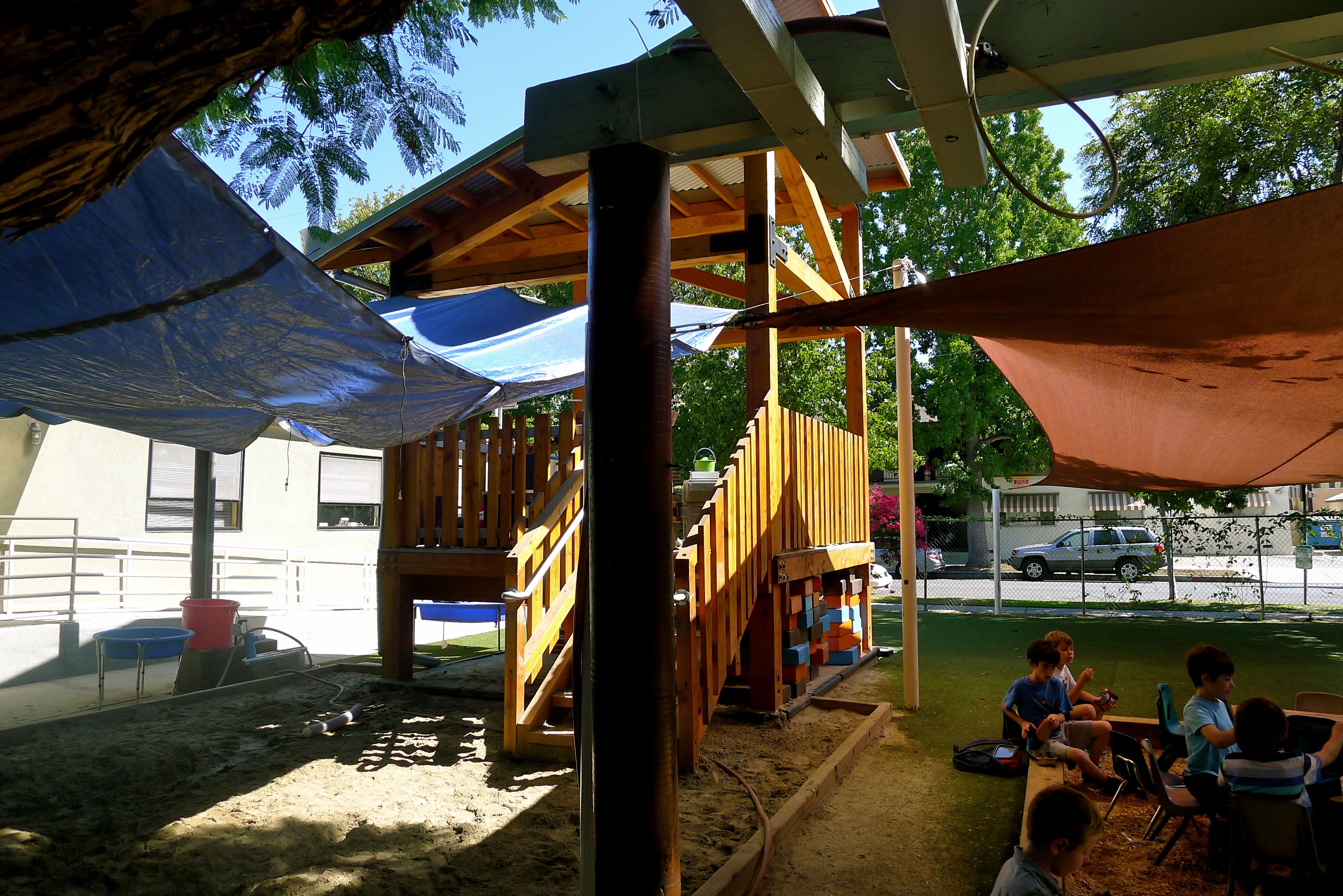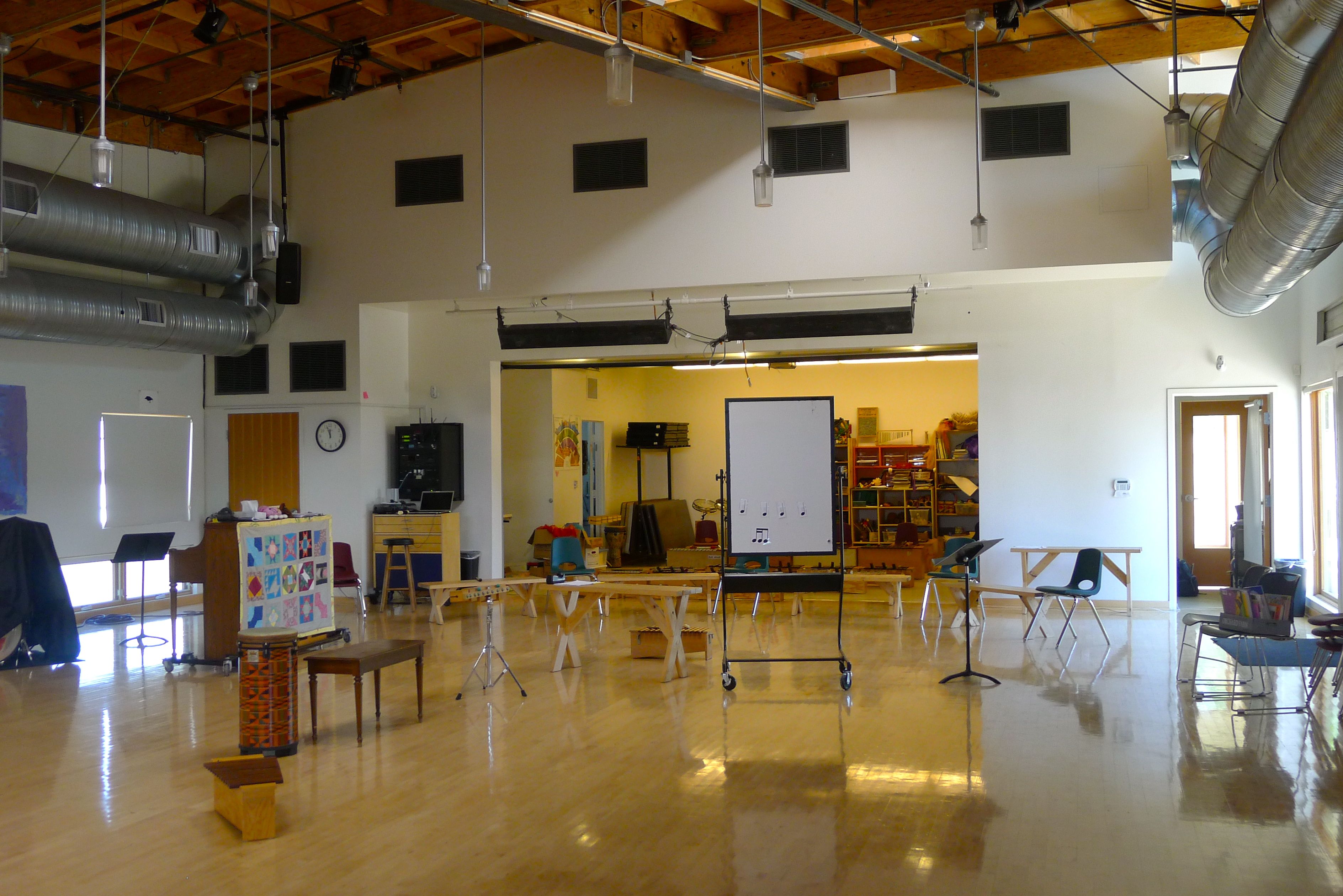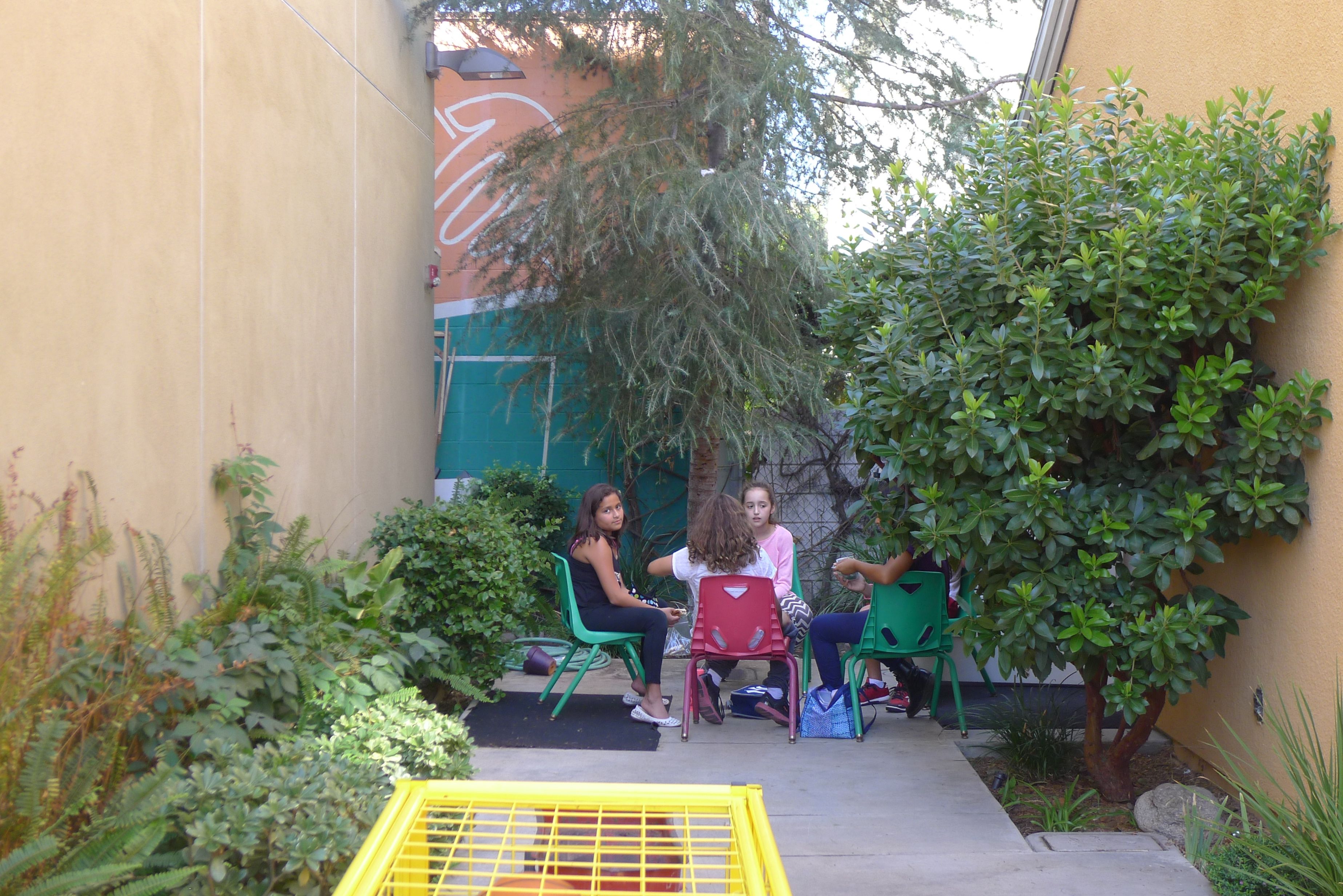
There’s something captivating about PS1 (Pluralistic School One). Of course, the immediate impact of the award-winning sustainable campus, built from the ground up on an acre in Santa Monica, is remarkable. It’s a series of buildings where the architecture encourages exploration into every inch of the creatively constructed school. Modern classrooms surround a central outdoor space, perfect for gathering and playing. There’s plenty of shade in just the right places, provided in part by a 100-year-old oak tree. There’s an easy indoor-outdoor feel that makes this urban school instantly welcoming. It’s a place you’ll want to stay a while, like the parents I observed, who’d dropped off their kids and stayed to chat with each other.

PS1 asks, encourages, requests parents to be a part of the school community, modeling an inclusive school community for the students. We absolutely love the philosophy at PS1, where the school is part of an extended community in which parents raise their kids. Trust us when we say this doesn’t happen accidentally at private schools. It takes unwavering school leadership to set the tone for an inclusive, connected community and encourage even the most reluctant cynics to help foster these relationships through events and volunteerism.

The outdoor courtyard is where I ran into Lisa Perttula, a PS1 mom and herself an educator. Before the prospective parent tour started, Lisa and I spent a few minutes talking about the school. Lisa loves this place where her family feels so immersed in its activities. The Perttulas have strong ties to the school (her mom is on the board) and her kids are thriving and happy there. We talked mostly about the school’s remarkable ability to educate a wide array of kids from different backgrounds.
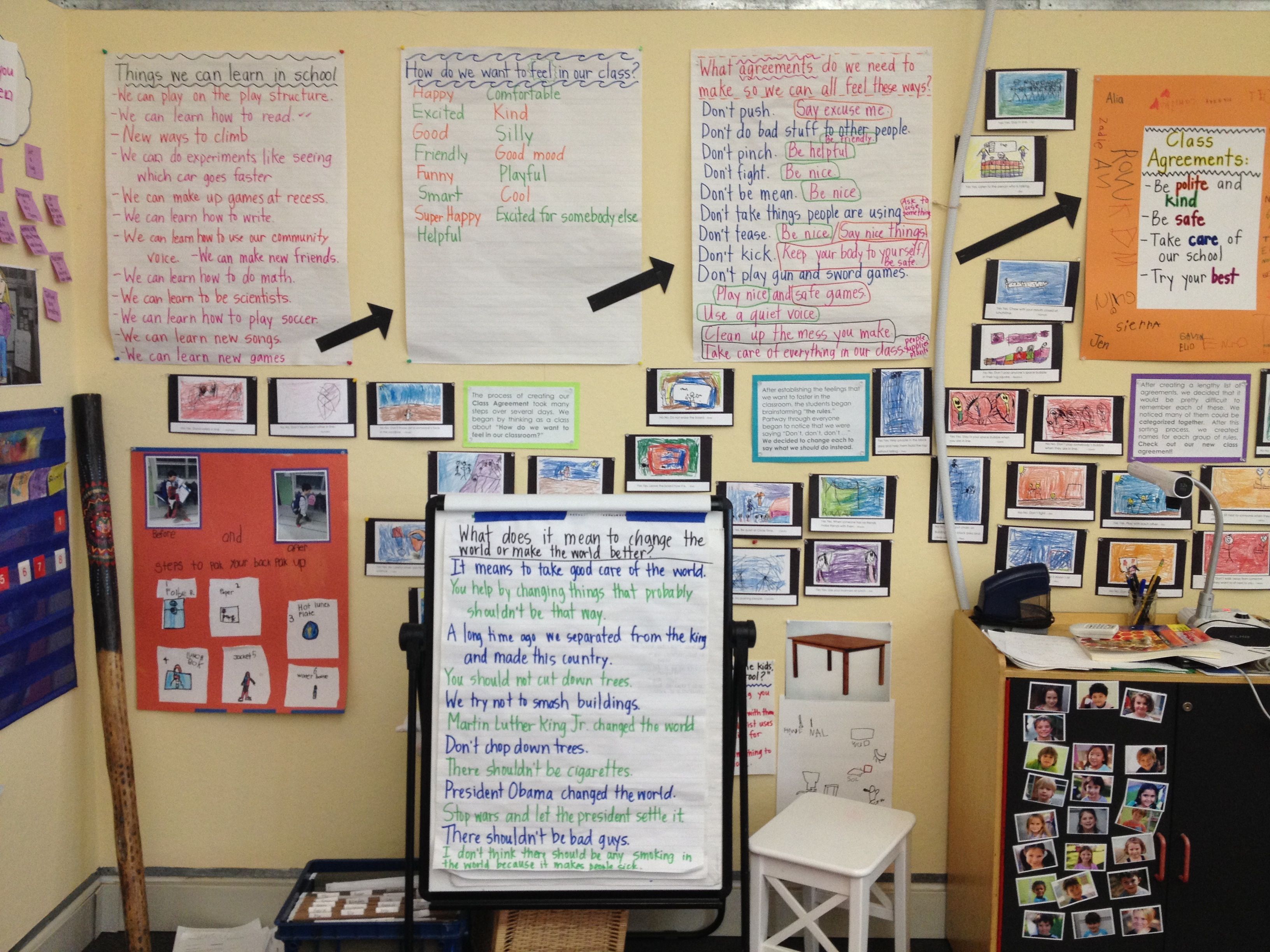
The tour began with remarks from Joel Pelcyger, the head of school. He co-founded the school in 1971, when he was just 24 years old! A bold, ambitious task that was no small feat, Joel has stayed true to his mission and thus the school has too. PS1’s unique brand of progressive education is the result of Joel’s vision and work, along with his co-founder and team. The place Joel occupies as a leader in the forefront of progressive education has remained powerful for more than three decades. This experience gives PS1 the confidence to teach what it believes, to incorporate the latest in educational best practices and to resist pressure to conform to ideas it doesn’t believe serve children well (i.e. teaching to the test). The result is a fabulous mélange of big ideas that come together inside the classroom and extend to the school community. “Pluralism is the belief that a community is enriched when individual differences are respected and welcomed.” A founding value of PS1, this concept is woven into all aspects of the school.

Joel opened the tour by welcoming the packed room of about 80 prospective parents. He is bright and engaging, candid and committed, reminding me of one of my favorite college professors at UC Berkeley. He imparts strong, well-honed beliefs about the state of education in 2014. Overall, he sees the U.S. educational system as one which creates a “high-pressure environment where the focus in on success at any cost.” The result, he says, is “kids cheating on standardized tests and trying desperately to get ahead.” Astutely, he observed, this approach is “unbalanced and lacks engagement…we need engagement and performance, not just performance.” The essence of his brand of progressive education the belief that creativity, innovation, storytelling and critical thinking get young people jobs, creates entrepreneurs and leads to lifelong success. Learning, he believes, should be for life not just for the sake of learning to get through school. “Start with fitting in by being yourself,” Joel believes. That is the essence of pluralism.
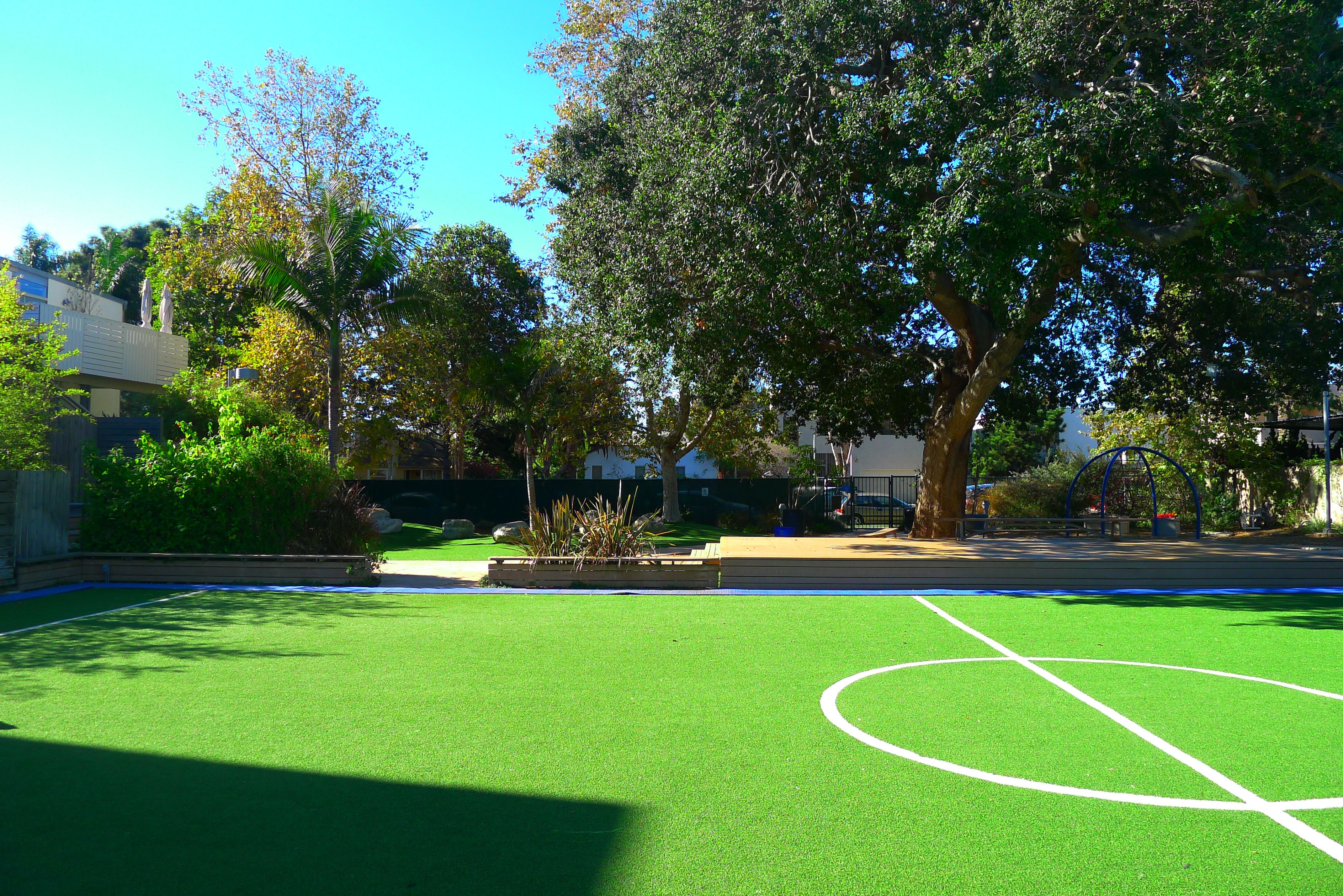
Pluralism, Learning, and ‘Self-Making’
In order to fully appreciate PS1’s program, it’s helpful to have an understanding of the philosophical underpinnings of pluralism. We can then use this understanding to analyze the school’s curriculum and how it upholds pluralistic virtues.
At the root of pluralism is the notion that individuals espouse different beliefs about ‘truth, goodness, and beauty.’ These divergent belief systems, although occasionally in conflict with one another, are honored for the complexity and richness that they bring to a community. Put another way, pluralism recognizes that there is not a singular framework through which every person should construct a meaningful life. For example, a collectivist society that values collaboration, solidarity, and the well-being of the group is not more or less important than a society that highlights individual success, autonomy, and independent leadership. Pluralism allows space for multiple ways of being.

At PS1, students are celebrated for the unique histories, heritage, and life experience that they bring to the school. Simultaneously, they are offered the opportunity to explore who they are and to shape their identities through the numerous creative and academic pursuits offered on-campus. Essays on family histories, learning style and personality inventories, and a vast number of visual arts and music projects allow children – even as early as kindergarten – to think about who they are and tinker with their evolving identities. Unlike some of PS1’s more traditional peer schools – which may emphasize the cultivation of an ‘academic’ self above all things – PS1 empowers its students to steer the process of self-making, to be introspective, and to see themselves reflected in schoolwork. Academics are incredibly important, but they are not the sole focal point of an education at PS1.
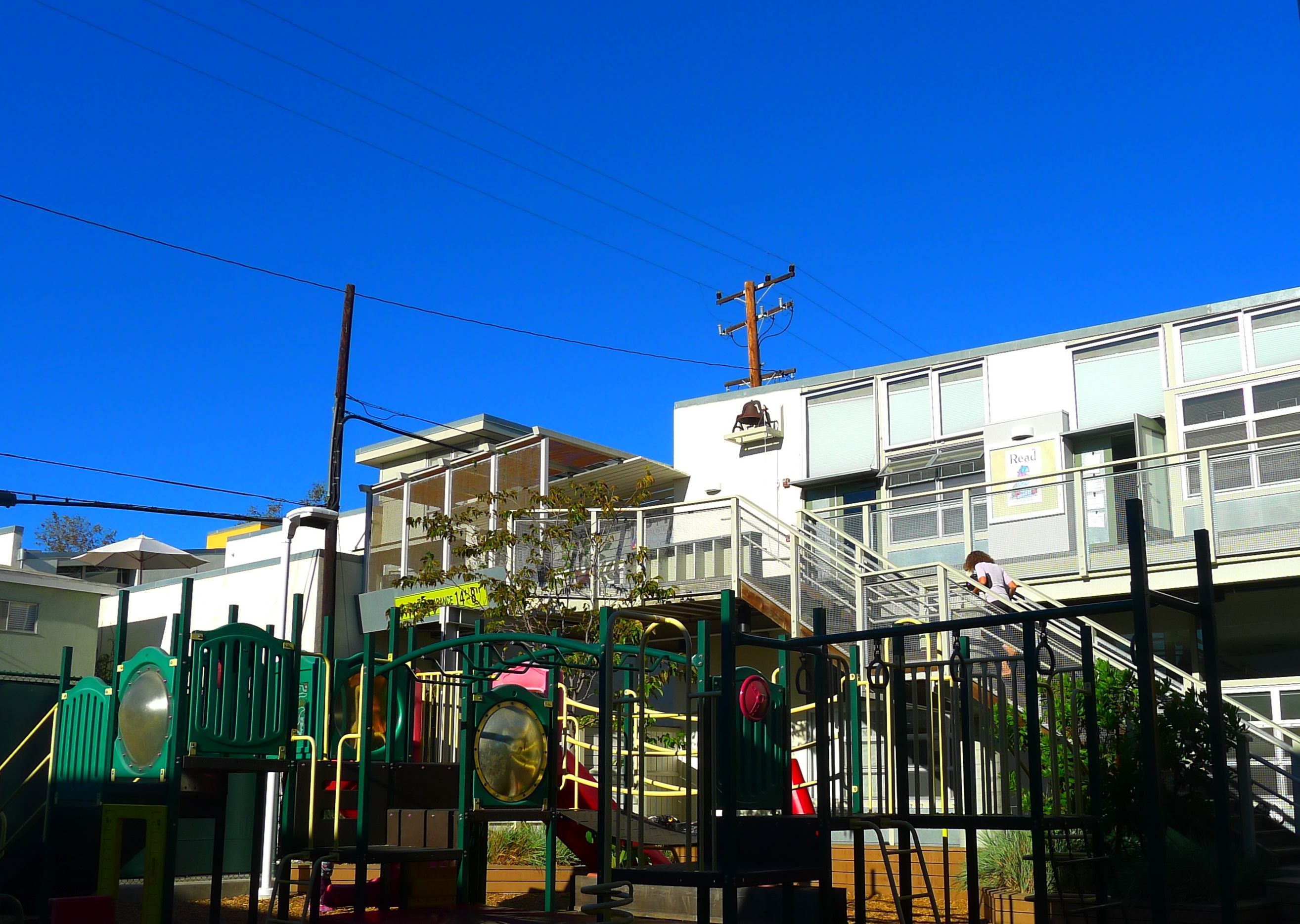
A clear example of PS1’s commitment to ‘plural self-making’ is its recent launch of the STEAM Studio program (Science, Technology, Engineering, Art and Math). The Studio is, quite literally, an intellectual and creative playground filled with art supplies, gadgets, and building materials (I’m reminded of the ‘black box’ experimental theaters that are popular in college). Under the supervision of the Studio’s director, Abbie Perttula, a veteran PS1 teacher with 43 years of experience, children engage in collaborative and experiential projects connected to what they are doing in their respective classes. The Studio is an ideal space for the early self-expression and reflection mentioned above. In addition to simply being a ‘fun’ place, the Studio grants students a sense of self-possession that is atypical of elementary learners.
PS1 uses a developmental approach. Every kid learns in different ways, at different rates and at different times. The school’s teaching techniques help each child reach his/her maximum potential. There is, says Joel, “an element of genius in every one of us.”

The size of PS1 is intentionally small. It is a K-6 with 220 students. All classes are multi-age, called “clusters” with a 2-year age range. There are two lead teachers for every class and 5 full-time specialists for music, PE, art, drama and library.
There’s a happy adrenaline that flows through PS1. As the tour visited classrooms, we stopped in at one of the two K-1 classes where were working on a writing workshop. Every classroom has a shared outdoor space to connect it to its neighboring classroom. In the 2-3 grade class, kids were talking about their social justice study unit. There is a lot collaborative group work among the students. The science unit focused on energy was using computers to research wind, solar and geothermal energy. The kids were articulate and engaged, willing to explain their work to us as we stopped into their classrooms. The classrooms are big and bright, humming with the kids’ sense of fun, exuberance and creativity. PS1 uses traditional teacher-directed lessons in combination with students working in groups and individually.
PS1 is a plastic-free, nut-free school, with an emphasis on eco-friendly practices and sustainability. Financial aid based on need is available at PS1. The school allocates nearly 15 percent of its tuition to financial assistance. This is about $900,000 annual in financial aid.
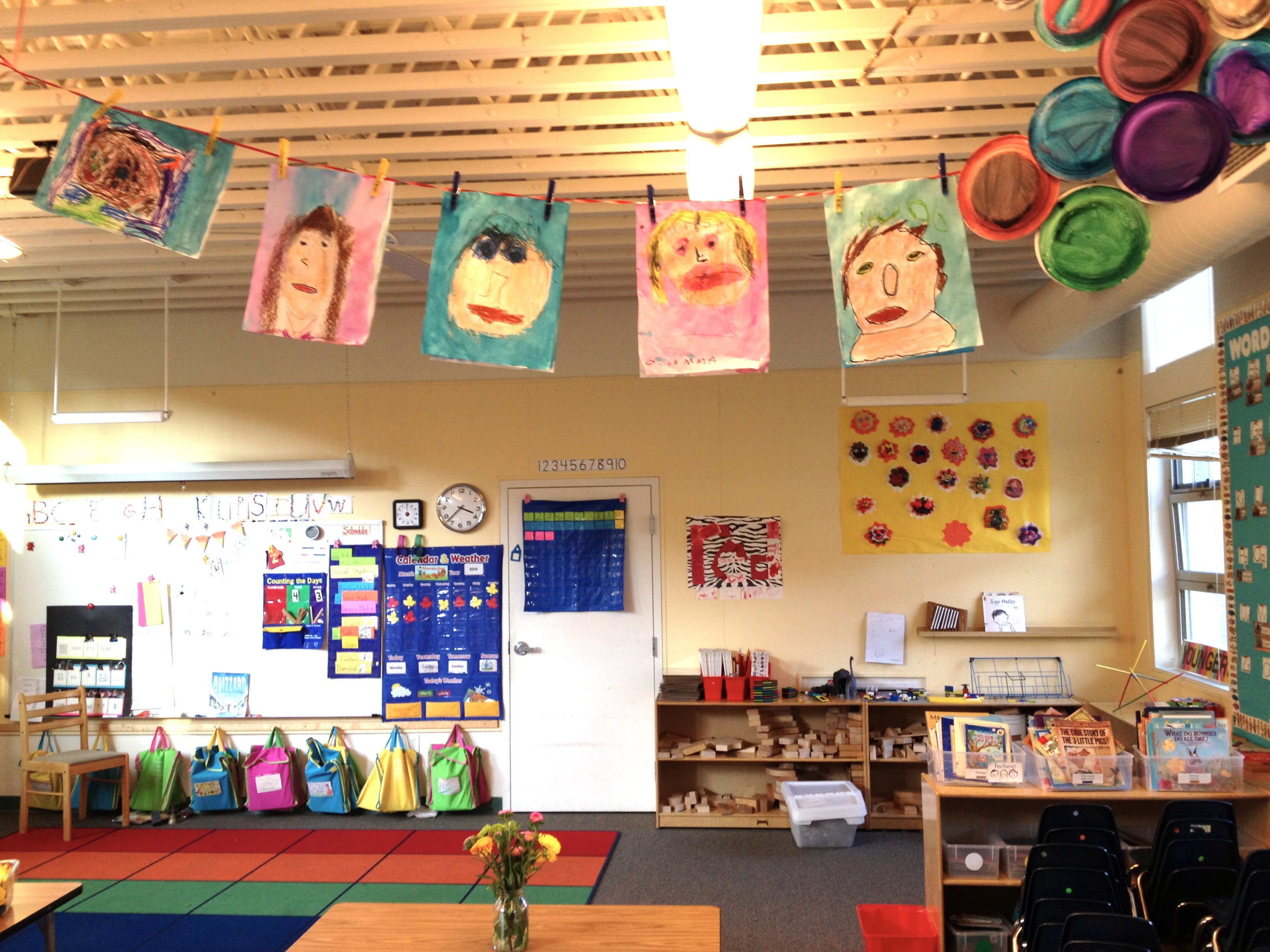
Students graduation from PS1 and go on to Crossroads, Marlborough, Harvard-Westlake, Brentwood, Windward, Viewpoint, Archer, New Roads, Chadwick, Paul Revere and Lincoln Middle School, among others. PS1 admits students from over 50 preschools and zip codes in the greater L.A. area.
At PS1, the equation is clear: instead of knowledge acquisition with a singular focus on performance outcomes, students are taught, inspired and encouraged to be engaged learners who embrace differences. These are tools and skills that will be acquired during students’ formative years at PS1. These are the same skills that will empower kids and easily translate into the real world. A powerful notion exists here: there is immense value in fitting in by being yourself. Community, acceptance, self-expression, non-tradition, engagement, diversity, learning, gratitude, future, community service. In a word, PLURALISM.
For more information, visit www.psone.org
I enjoyed collaborating with my friend and colleague Matt Steiner on this piece!–Christina
Matt Steiner has worked in the fields of elementary and secondary education for nearly 10 years. His nuanced knowledge of elementary schools is informed by his relationships with admission directors, school placement consultants, and his many visits to private schools in Los Angeles. He is currently the Director of Marketing at Compass Education Group, a test preparation firm that specializes in private SAT, ACT, and ISEE tutoring.
Let’s be social! Like Beyond The Brochure on Facebook. We post a lot of stuff on Facebook that’s not on the blog! Are you more the email type? Get our posts in your in box by subscribing (enter your email in the “subscribe” box on the right sidebar of the blog. Or, buy the Second Edition of our book at Amazon.com or your local bookstores!
